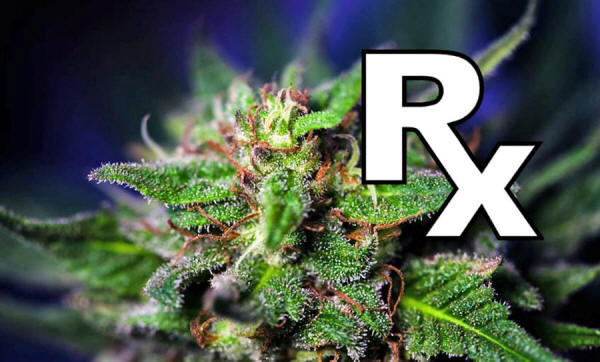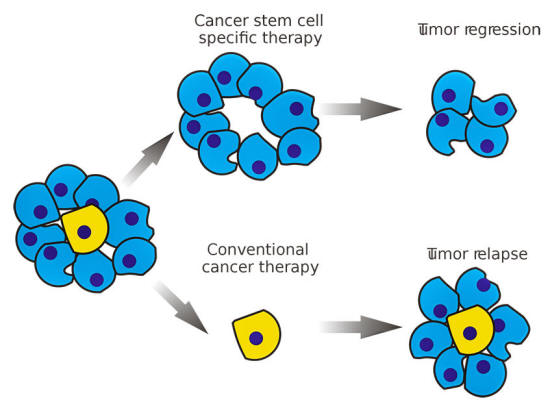|
December
01, 2018
that may kill brain cancers that chemotherapy and radiation can't touch,
so why isn't it
being used today...?
Even the National Cancer Institute (NCI) now admits that it had been wrong for decades about "early stage" breast (DCIS) and prostate (HGPIN) "cancers," and that they should be reclassified as indolent or benign lesions of epithelial origin, i.e. not "cancer" at all!
Essentially, therefore, millions were over-diagnosed and over-treated for cancers they never had.
Even now, despite this
admission, the vast majority of conventional doctors have yet to
account for, acknowledge, or integrate this radically different
definition of cancer and its implications for treatment into their
"standard of care."
But one substance
conspicuously absent from the list was
cannabis, which is the herb
we now turn to to give it a fair representation in the context of
this topic.
Unlike THC, cannabinoids do not activate the cannabinoid 1 and cannabinoid 2 receptors in the central nervous system in any significant way, making their activity less controversial as they do not produce changes in perception and sensation associated with "recreational" and/or "psychedelic" drugs.
There are actually over 60 cannabinoids in cannabis, but the second most abundant one, cannabidiol (CBD), has been found to inhibit and/or kill a wide range of cancers in the animal model, including gliobastoma (a difficult-to-treat type of brain cancer), breast, lung, prostate, and colon cancer.
There have been a wide range of mechanisms identified behind these observed anti-tumor activities, including,
...but the one we
wish to focus on in this report is its ability to to inhibit the
stem-like potential of cancer cells.
In their normal state of
function they are essential for healing and bodily regeneration, as
they are capable of differentiating into the wide range of cells
that make up the body and need to be regularly replaced when
damaged.
Unlike regular tumor cells, cancer stem cells are uniquely tumorigenic because they are capable of breaking off from an existing lesion or tumor and forming a new tumor colony of cells.
In this sense, they are "mother cells" at the heart of cancer malignancy, whose ability to colonize other tissues by producing all the "daughter cells" necessary to form a new tumor make their existence highly concerning from the perspective of cancer prevention and treatment.
Radiation and chemotherapy, while capable of reducing the size of a tumor, actually enrich the post-treatment residual lesion or tumor with higher levels of cancer stem cells, and in some cases transform non-cancer stem cells into cancer stem cells, ultimately making the post-treatment state of the treated tissue far worse than its pre-treatment condition.
This is why identifying
and using natural, safe, effective and affordable ways to target
cancer stem cells versus the non-tumorigenic tumor cells in a lesion
or tumor is the only rational way to treat cancer, and should be the
primary focus of present day cancer treatment approaches.
A 2013 study, 1 mentioned in the review, found that patient-derived glioblastoma cells when exposed to cannabidiol saw a significant down-regulation of the genetic tumor marker Id-1, which has been closely correlated with brain cancer cell invasiveness.
They also found that
cannabidiol was capable of inhibiting neurosphere formation (a sign
of cancer stem cell tumor formation), as well as was capable of
inhibiting glioblastoma tumor invasiveness in an animal model.
To view other anti-glioblastoma
substances, view our database on the subject.
Another study, published
last month, found that cannabidiol inhibits glioma stem-like
proliferation by inducing autophagy, a natural form of programmed
cell death. 4
We have indexed hundreds of studies on cannabis' therapeutic properties, a good subset concerning its ability to prevent, kill, or regress a wide range of different cancer types.
You can view them all on
our cannabis research database.
Anecdotes of healing with cannabis are not uncommon.
One such report can be viewed on our colleague Dr. Jeffrey Dach's website, titled, "Cannabis Oil Brain Tumor Remission," demonstrating just how powerful cannabis and its cannabinoids may be for accomplishing what conventional approaches can not.
Last year, we reported on a similar case of temporary remission in childhood leukemia using cannabis extract.
Also, consider reports
like this one, where a woman clearly being victimized by
conventional medicine was able to replace 40 different medications
through using raw cannabis juice...
The short of it is that the future of medicine, if it is to continue to advertise itself to be concerned with alleviating human suffering and being guided by "evidence," must incorporate this safe, time-tested, affordable and effective healing agent into its standard of care.
Failing to do so will not de-validate cannabis, rather, but the medical system itself.
One might ask, if cannabis can treat "incurable" brain cancers, and is safer and more effective than chemotherapy and radiation,
Instead we still live in a time and age where simply possessing it or using it is in some jurisdictions classified as a criminal offense of dire if not irreparable consequence to our civil liberties.
Perhaps we are at a
critical turning point now and the aforementioned research will lead
us all forward to a more enlightened medical ethos that respects the
right of a patient to choose his or her treatment as long as it does
no harm to others.
References
|




